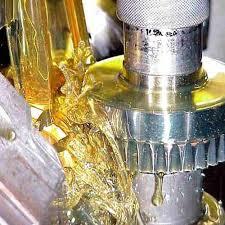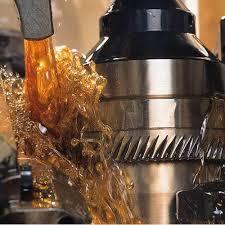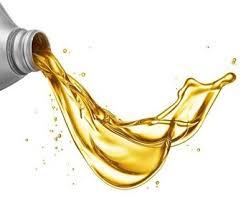Cutting Oil
Price 200 INR/ Liter
MOQ : 20 Liters
Cutting Oil Specification
- Color
- Sliver
- Use
- Automotive Lubricant
- Pack Type
- Bucket
Cutting Oil Trade Information
- Minimum Order Quantity
- 20 Liters
- FOB Port
- Mumbai
- Payment Terms
- Cash Advance (CA), Cash in Advance (CID)
- Supply Ability
- 100 Liters Per Day
- Delivery Time
- 5 Days
- Main Domestic Market
- Chandigarh, Himachal Pradesh, Sikkim, Manipur, Uttarakhand, Daman and Diu, Dadra and Nagar Haveli, Lakshadweep, , South India, East India, Andaman and Nicobar Islands, Assam, Arunachal Pradesh, Bihar, Delhi, Gujarat, Goa, Haryana, Jammu and Kashmir, Jharkhand, Karnataka, Kerala, Madhya Pradesh, Maharashtra, Mizoram, Meghalaya, Nagaland, Punjab, Pondicherry, Rajasthan, Tamil Nadu, Telangana, Tripura, West Bengal, All India, Uttar Pradesh, North India, Andhra Pradesh, Central India, Odisha, West India, Chhattisgarh
About Cutting Oil
Cutting oil, also known as cutting fluid or coolant, is a type of lubricant specifically formulated for use in metalworking processes such as machining, milling, drilling, and turning. It serves several important functions in these operations:
Lubrication: Cutting oil reduces friction between the cutting tool and the workpiece, as well as between the tool and the machine's components. This lubrication helps prevent overheating and premature wear of cutting tools, resulting in improved surface finish and dimensional accuracy of the machined parts.
Cooling: One of the primary functions of cutting oil is to dissipate heat generated during metalworking operations. By carrying away heat from the cutting zone, cutting oil helps prevent thermal damage to both the workpiece and the cutting tool. This cooling effect also contributes to extending tool life and maintaining tight machining tolerances.
Chip Removal: Cutting oil helps facilitate the removal of chips or swarf produced during metal cutting processes. By lubricating the cutting edge and flushing away chips from the cutting zone, it prevents chip recutting and minimizes the risk of chip buildup, which can negatively impact surface finish and machining accuracy.
Corrosion Protection: Cutting oils often contain corrosion inhibitors to protect both the workpiece and the cutting tool from rust and corrosion. This is particularly important when working with ferrous metals or when the machined parts are subject to prolonged exposure to moisture or corrosive environments.
Types of Cutting Oils:
Mineral Cutting Oils: These are formulated primarily from mineral base oils and may contain additives such as sulfur, chlorine, or phosphorus-based EP (extreme pressure) agents for improved performance in heavy-duty machining operations.
Synthetic Cutting Oils: Synthetic cutting fluids are based on synthetic base oils and are often preferred for their superior cooling and lubricating properties, as well as their longer service life compared to mineral oils.
Water-Soluble Cutting Fluids: These cutting fluids are mixed with water to form emulsions or solutions and are commonly used in applications where rapid heat dissipation is required. Water-soluble cutting fluids are easier to clean and typically offer better environmental friendliness compared to straight oils.
Applications: Cutting oils are used in various metalworking processes across industries such as automotive, aerospace, manufacturing, and machining. They are employed in operations ranging from high-speed precision machining to heavy-duty metal removal applications.
Maintenance: Proper maintenance of cutting oil systems is essential to ensure optimal performance and longevity. This includes regular monitoring of fluid concentration, pH levels, and contamination levels, as well as timely filtration or replacement of cutting oil to prevent issues such as bacterial growth, foaming, or degradation of cutting performance.
Overall, cutting oil plays a crucial role in metalworking operations by improving machining efficiency, tool life, and surface quality while also providing essential protection against heat and corrosion.

Tell us about your requirement

Price:
Quantity
Select Unit
- 50
- 100
- 200
- 250
- 500
- 1000+
Additional detail
Mobile number
Email
More Products in Industrial Oil Category
High Temperature Chain Oil
Price 400 INR / Liter
Minimum Order Quantity : 20 Liters
Color : Amber
Use : Reduces wear, extends chain life, and prevents corrosion under high temperatures
Type : High Temperature Chain Oil
Pack Type : Can
Spindle Oil
Price 80.00 INR / Liter
Minimum Order Quantity : 50 Liters
Color : Water white
Use : Industrial
Type : Spindle Oil
Pack Type : 50 L
Hydraulic Oil
Price 400 INR / Liter
Minimum Order Quantity : 18 Liters
Color : Yellow
Use : Industrial
Type : Hydraulic Oil
Pack Type : Bucket
Engine Oil
Price 200 INR / Liter
Minimum Order Quantity : 100 Liters
Color : Yellow
Use : Lubrication
Type : Engine Oil
Pack Type : Can

 Send Inquiry
Send Inquiry






 Send Inquiry
Send Inquiry Send SMS
Send SMS Call Me Free
Call Me Free